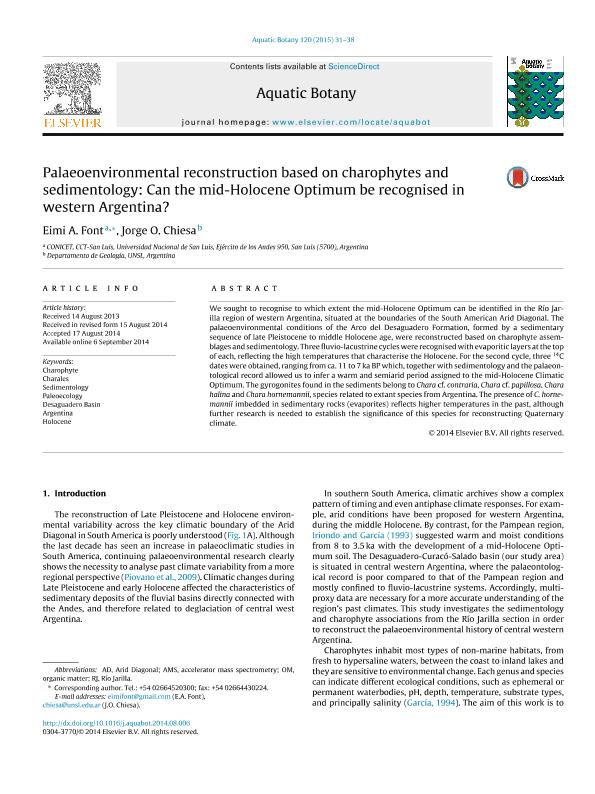Artículo
Palaeoenvironmental reconstruction based on charophytes andsedimentology: Can the mid-Holocene Optimum be recognised inwestern Argentina?
Fecha de publicación:
06/09/2014
Editorial:
Elsevier Science
Revista:
Aquatic Botany
ISSN:
0304-3770
Idioma:
Inglés
Tipo de recurso:
Artículo publicado
Clasificación temática:
Resumen
We sought to recognise to which extent the mid-Holocene Optimum can be identified in the Río Jarilla region of western Argentina, situated at the boundaries of the South American Arid Diagonal. The palaeoenvironmental conditions of the Arco del Desaguadero Formation, formed by a sedimentary sequence of late Pleistocene to middle Holocene age, were reconstructed based on charophyte assemblages and sedimentology. Three fluvio-lacustrine cycles were recognised with evaporitic layers at the top of each, reflecting the high temperatures that characterise the Holocene. For the second cycle, three 14C dates were obtained, ranging from ca. 11 to 7 ka BP which, together with sedimentology and the palaeontological record allowed us to infer a warm and semiarid period assigned to the mid-Holocene Climatic Optimum. The gyrogonites found in the sediments belong to Chara cf. contraria, Chara cf. papillosa, Chara halina and Chara hornemannii, species related to extant species from Argentina. The presence of C. hornemannii imbedded in sedimentary rocks (evaporites) reflects higher temperatures in the past, although further research is needed to establish the significance of this species for reconstructing Quaternary climate.
Archivos asociados
Licencia
Identificadores
Colecciones
Articulos(CCT - SAN LUIS)
Articulos de CTRO.CIENTIFICO TECNOL.CONICET - SAN LUIS
Articulos de CTRO.CIENTIFICO TECNOL.CONICET - SAN LUIS
Citación
Font, Eimi Ailen; Chiesa, Jorge O.; Palaeoenvironmental reconstruction based on charophytes andsedimentology: Can the mid-Holocene Optimum be recognised inwestern Argentina?; Elsevier Science; Aquatic Botany; 120; Part A; 6-9-2014; 31-38
Compartir
Altmétricas




